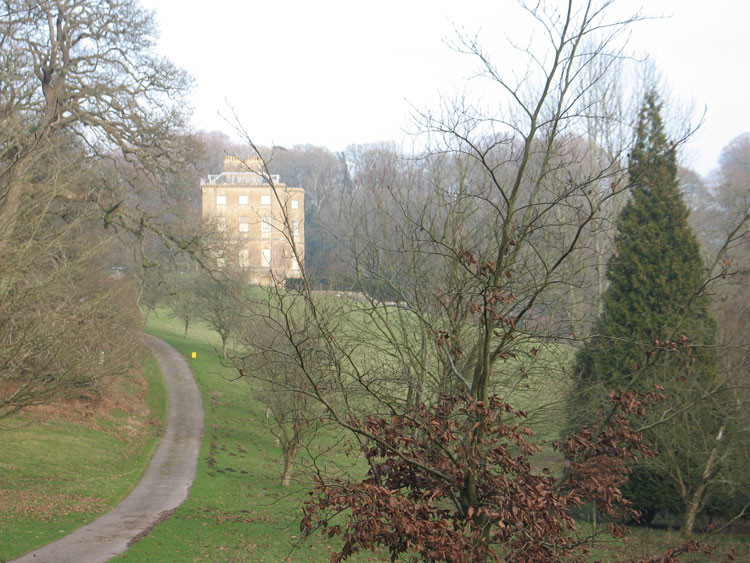Gower
047 Penrice Park

HLCA047 Penrice Park
Medieval manorial centre, administrative and defensive landscape and post-medieval gentry estate: medieval castle; post-medieval gentry house within contemporary parkland setting; post-medieval farmsteads and agricultural buildings. Back to Map
Historic Background
The historic landscape area of Penrice Park represents the core of the estate of Penrice, the later medieval and post-medieval focus of the former manor or Lordship of Penrice with its stone castle and post-medieval gentry house.
Little archaeological evidence is recorded for the area earlier than the medieval period other than a stray prehistoric find of a scraper (00162w). Initially the administrative centre of the manor/lordship of Penrice was located to the south at the ringwork within the settlement of Penrice, known as Mounty Brough, thought to have been established in 1099 by Henry de Beaumont. Penrice is one of the twelve 'ancient knights' fees' held by military service before 1135, which are listed in a charter of 1306 (RCAHMW 1991, 29-30, 113-115; Draisey 2002, 19; Nicholl 1936,168-169). The administrative centre appears to have been moved during the twelfth century to the site of the stone-built castle within the area. The de Penres family remained at Penrice until the early-15th century, when the lordship passed to the Mansels by marriage. During the post-medieval period the main landowner of the area continued to be the Penrice estate, by the eighteenth century the Mansel Talbot family.
The stone-built castle at Penrice (00170w; 11543) is thought to have a Norman origin, but almost lacking in datable detail. Much of the stonework appears to be of thirteenth century date, including a window with seats in the northwest gatehouse overlooking the ward. The castle was abandoned in favour of Oxwich Castle in the late medieval period and fell into ruin. The site was slighted by Cromwell in the seventeenth century. When engraved by Buck in c.1735 the surviving curtain wall still had crenellations. The ruins were probably reduced for picturesque effect in the late eighteenth century, once the nearby mansion had been constructed.
The focus of the park, Penrice Castle Mansion (01502w; 19670; LB 11531 I), was built in 1773-7 for Thomas Mansell Talbot, to the design of Anthony Keck, architect, of King's Stanley, Gloucestershire. Records refer to Bath stone and stone 'brought from the quarries at Margam'. The masonry is by William Gubbings and the plasterwork by Thomas Keyte. Two chimneypieces acquired by Talbot while travelling in Italy were installed in 1780. That in the Drawing Room is signed 'Cesere Aguatti Romano', that in the Dining Room is by Carlo Albacini, with gilt bronze garlands by Louis Valadier. The planning of the house is based on a spine corridor, which is apparent at basement level and on the upper floors, but not on the ground floor where the entrance axis, with vestibule and drawing room, dominates instead. The staircase has been relegated to a minor position. There are similarities with the planning of the more ambitious house for John Symmons at Slebech Park, Pembrokeshire, the design of which is also credited to Keck. The house was considerably extended in the nineteenth century, but the extensions were demolished between 1967-8 (Newman 1995, 508-9; RCAHMW 1981, 293-303).
The pattern of the associated parkland and surrounding fieldscape of the core land of the estate is essentially that of the first edition OS, and the estate plan of 1785, the enclosures remain little altered throughout the twentieth century. The area to the south retains ancient woodland, the northern part of Mill Wood.